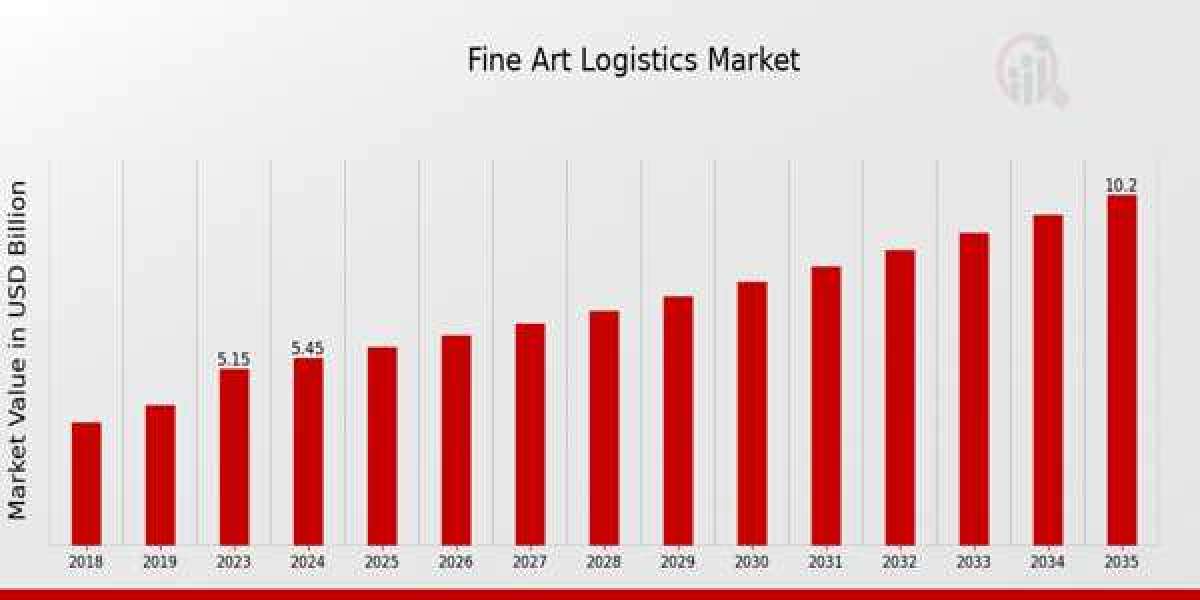The fine art logistics market has emerged as a highly specialized and essential segment within the broader logistics and supply chain industry. As the global art market continues to expand, encompassing everything from classical masterpieces to contemporary installations, the demand for sophisticated, secure, and carefully managed logistics solutions has grown exponentially. Fine art, by its very nature, is often irreplaceable and carries immense historical, cultural, and financial value. This has led to the development of tailored logistics services dedicated entirely to the safe handling, transportation, storage, and installation of artwork. The fine art logistics market is not just about moving objects from one place to another—it is about preserving heritage, ensuring integrity, and maintaining the condition of priceless assets throughout the journey.
Unlike standard freight or courier services, the fine art logistics industry requires an extremely high level of attention to detail, technical knowledge, and experience. Every step, from custom creating and climate-controlled transportation to white-glove installation and real-time tracking, is designed to protect artworks from environmental damage, shock, and potential theft. Specialized packaging using conservation-grade materials, along with temperature and humidity-controlled environments, are standard practices within this market. Whether transporting a centuries-old oil painting to a museum or shipping a contemporary sculpture to an international art fair, logistics providers must follow precise protocols to ensure flawless execution. Additionally, artworks often require professional condition reporting, insurance documentation, and assistance with international customs clearance—further differentiating fine art logistics from other freight categories.
Growth in the fine art logistics market is being driven by several key factors, the most prominent being the overall expansion of the global art market. International art fairs, gallery exhibitions, and auctions have become increasingly popular, bringing together artists, collectors, curators, and institutions from across the globe. Events such as Art Basel, Frieze, and TEFAF showcase artworks of extraordinary value, all of which must be transported securely and efficiently. As a result, fine art logistics providers play a vital behind-the-scenes role, coordinating global shipments, adhering to tight deadlines, and managing complex handling requirements. Additionally, museums and galleries frequently collaborate on exhibitions, loaning pieces to one another. This growing network of cultural exchange fuels the demand for expert logistics services capable of managing delicate and valuable shipments.
Online art sales have also begun to reshape the landscape of the fine art logistics market. Platforms that allow collectors to browse and purchase artworks digitally have opened up new global opportunities for artists and dealers alike. With a growing number of transactions being conducted remotely, there is an increasing need for reliable logistics partners who can deliver artworks safely to buyers across continents. This digital transformation, while enhancing accessibility to art, also demands a new level of efficiency, transparency, and responsiveness from logistics companies, prompting many to adopt advanced technologies such as GPS tracking, inventory management software, and even blockchain solutions for provenance and documentation.
Geographically, the fine art logistics market sees significant activity across North America, Europe, and Asia-Pacific. North America, with major art hubs like New York and Los Angeles, hosts many of the world’s top museums and galleries, making it a critical region for high-value art logistics. Europe, rich in cultural heritage and home to countless historical artworks, presents a steady demand for intra-continental transport and museum-to-museum exchanges. Meanwhile, Asia-Pacific is witnessing rapid growth due to an expanding middle class, increasing numbers of collectors, and rising interest in both local and international art. Markets such as China, Japan, and South Korea are particularly dynamic, prompting logistics companies to expand their operations and build stronger regional networks.
Read more about this report Fine art logistic Market report
Technology is playing an increasingly important role in the fine art logistics market. Clients today expect full visibility and control over their shipments, which has led to the adoption of digital tracking, condition monitoring sensors, and automated alerts for temperature or movement deviations. Digital documentation systems help reduce paperwork, streamline customs processes, and maintain records for insurance or valuation purposes. Blockchain is also emerging as a solution for ensuring authenticity and traceability in art transactions, particularly for high-value pieces and cross-border shipments. These innovations not only improve operational efficiency but also enhance trust and transparency—both of which are vital in an industry built on discretion and credibility.











